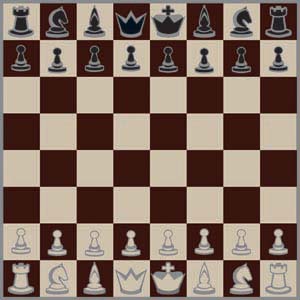Crazy Jerome
First Post
Agreed. It's easier to correct for bad rolls/bad scouting when you start out with what, 3x the hit points of earlier editions? The grind is intended to lower PC casualties, I would guess.
I'm not sure if it's possible to write a single edition with both "grind combat" (plenty of time to correct for bad luck/misinterpretation of the odds) and "save or die" or "old style Boot Hill combat" -- 1d6 damage, 6 is just dead -- so you'd better try your darnedest not to get shot!
Both are too extreme for most people, I think, but some folks want the extremes -- and perhaps the folks in the middle like a mix of "grinds" and "save or dies"?
Yes. I like the mix, too. But like FireLance's suggestion, when I'm the DM, I want some control over the mix--and a way to convey the distinctions to the players, in game.
One possible way to cater a bit to both crowds with one set of rules is to set hit points so that characters can always last at least two or three round in anything but the very worst circumstances (which they probably should have been clued in to avoid in the first place), and then make the escape options less about hit points and more about something else.
It has been awhile since I played AD&D, but I seem to recall that movement rates often were as much to blame as lack of hit points or healing. You often kept fighting if you got in over your head because running wasn't an option.
So maybe the "Fate" points, special magical items, 1/day special abilities, etc. should be geared less towards helping you fight the normal fight, and more about escaping the killer fights. That was kind of the point of the AD&D hold portal spell, I think, only that it never seemed to work out effectively because of movement rates.
Then if those are at least somewhat acquired independent of level, you can shift the game towards either extreme by how much you expect planning to compensate for such resources. The basic encounter math is built around CaW. The fighter with his sword and basic abilities, the wizard with some renewable magic, etc. can get into fights designed as equal challenge, and get something akin to a "fair" fight.
If that is mostly what you want, then you see to it that those other resources are provided in sufficient quantities to mitigate bad surprises, and not much more. That is, the DM would provide those resources to keep the action moving, without the too tough encounters being glossed over. They don't take long, because the party runs. OTOH, if you want something more like Fantasy Vietnam, you use the same rules for your fights, but it is entirely up to the players to replenish those resources as their cleverness permit and/or conserve them via careful planning and strategy. Those become the critical resources to track.
Of course, depending on play style in AD&D, you got some of this at low level with flasks of oil and food. If the DM let you drop food to get monsters to not chase you, and food was critical, it was exactly the kind of resource I'm talking about (operationally speaking). It's merely that in the discussion of these mundane resources, and the watering down of the model via renewable resources that do affect fights directly (i.e. charges in a fireball wand), the idea of magical, important, death-escaping magic can get lost in the shuffle.
Not sure I'm being entirely clear here, but picture an AD&D-ish game where the casters get some relatively low-powered 4E-style at wills and encounter magic for fights, but all of their "big guns" are for escape, out of combat healing, exploration, etc. and not easily renewable. Then you perhaps give the non-casters more options helping escape, avoid enemies, etc (i.e. make fighters a bit more skilled out of combat). And of course any magic items are either relatively low-powered or limited-use escape and so forth.
Would that model support both styles?
Last edited:


